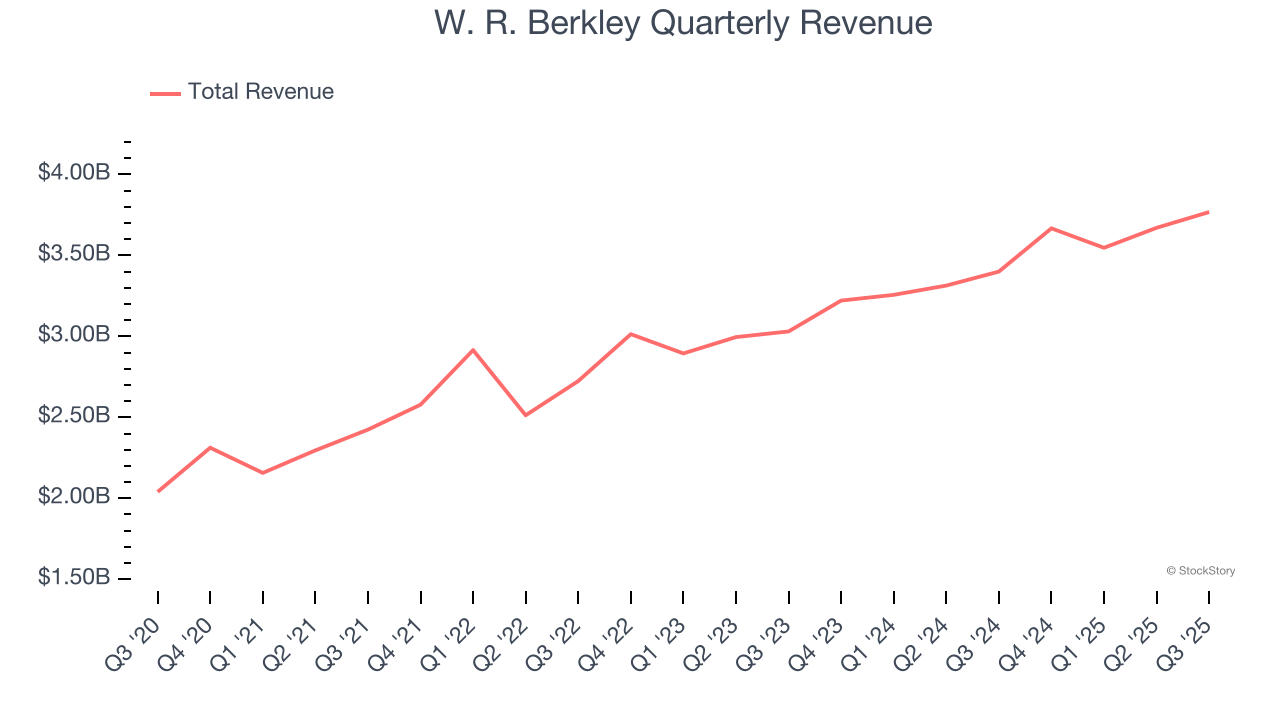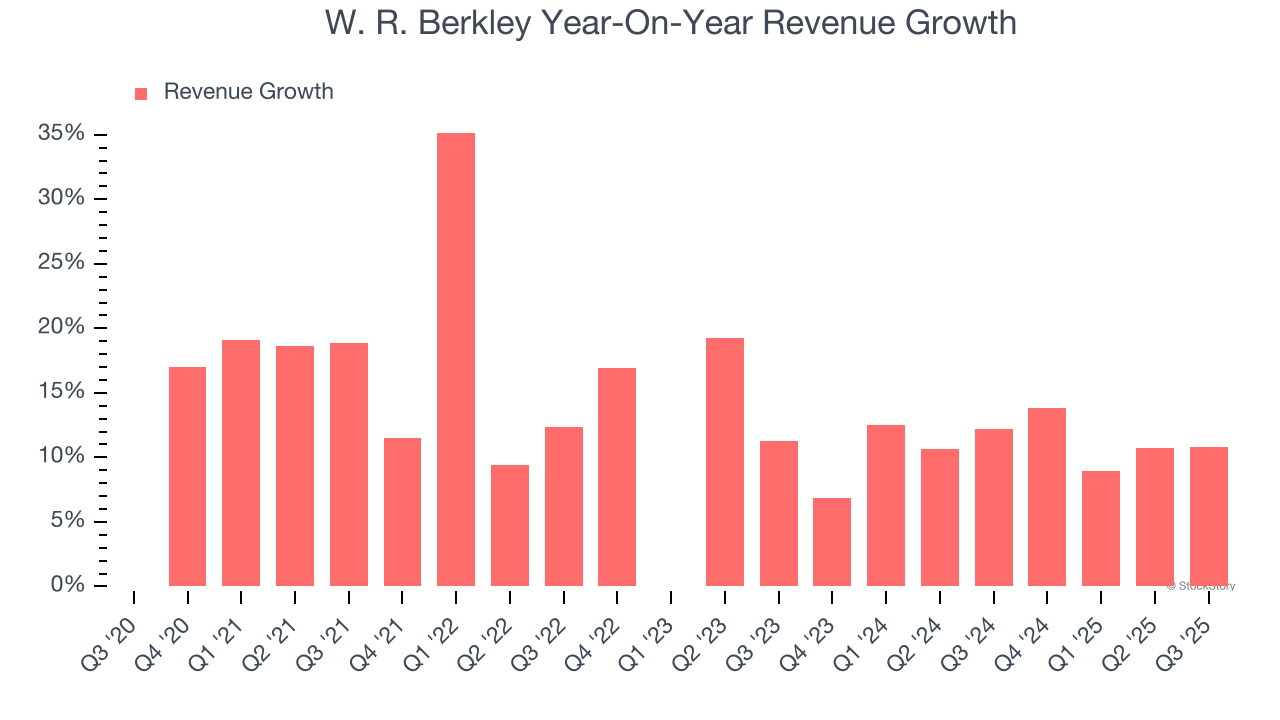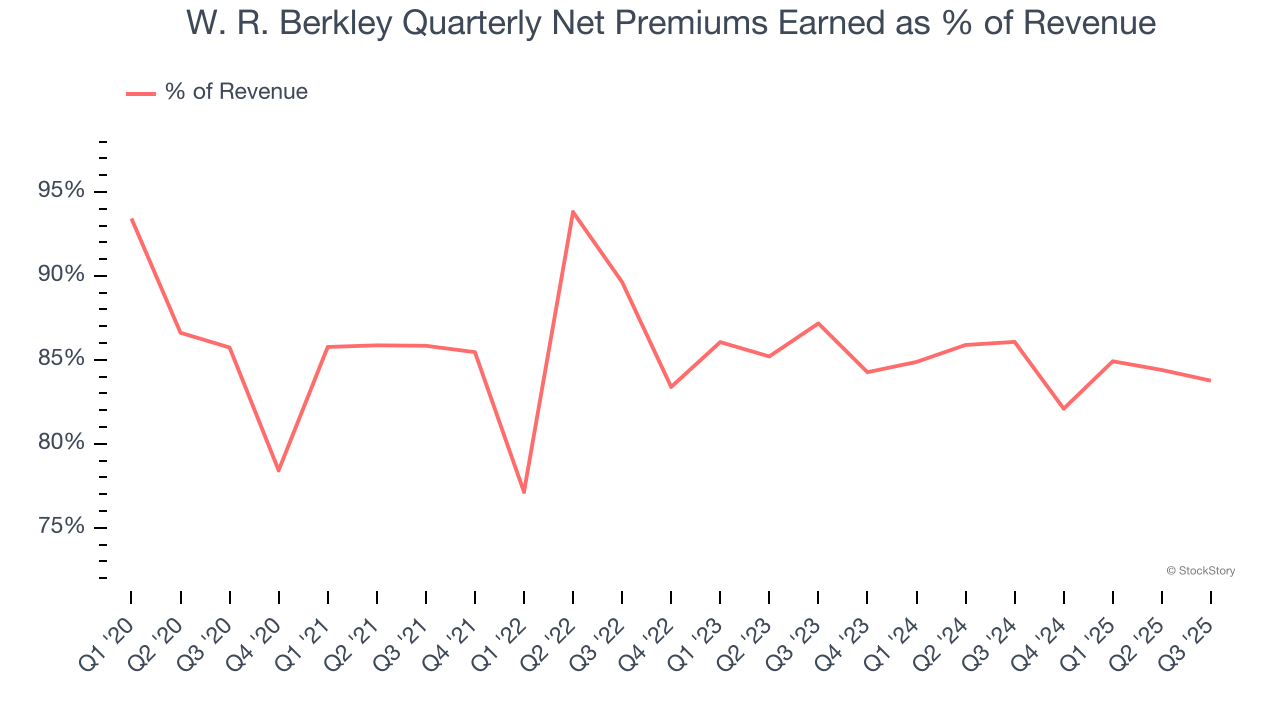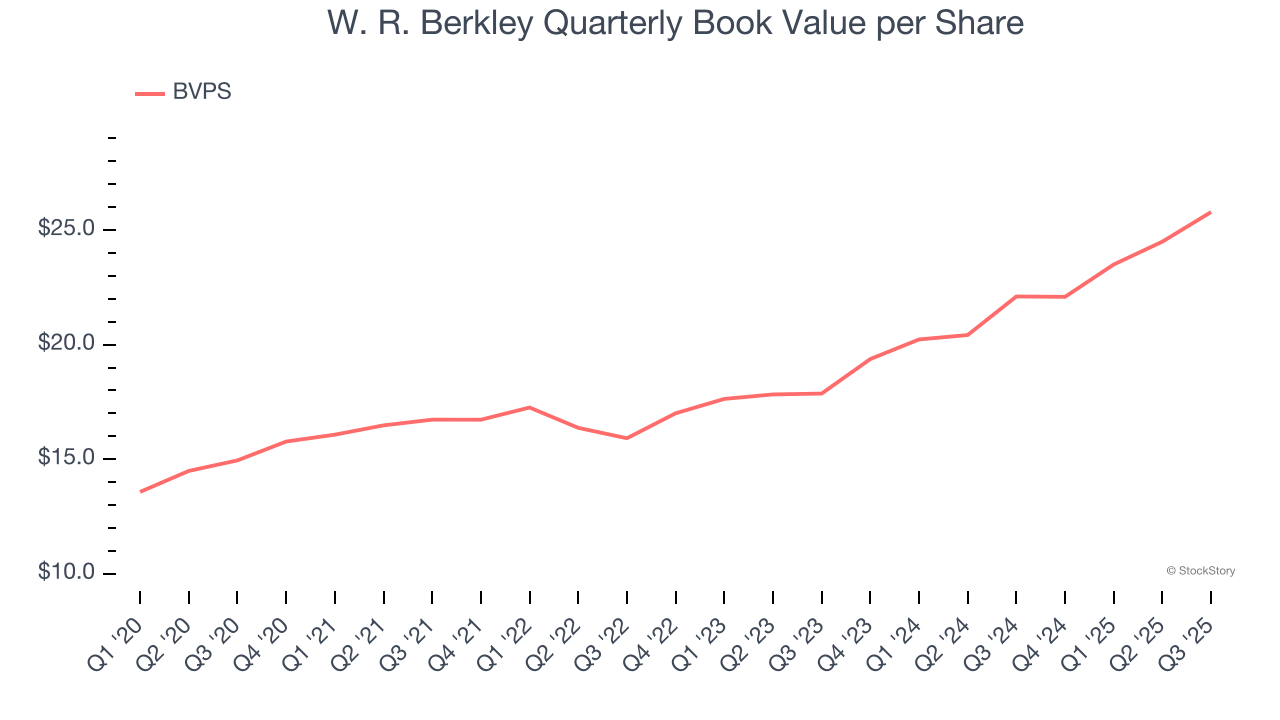
Property casualty insurer W. R. Berkley (NYSE: WRB) reported Q3 CY2025 results exceeding the market’s revenue expectations, with sales up 10.8% year on year to $3.77 billion. Its non-GAAP profit of $1.10 per share was in line with analysts’ consensus estimates.
Is now the time to buy W. R. Berkley? Find out by accessing our full research report, it’s free for active Edge members.
W. R. Berkley (WRB) Q3 CY2025 Highlights:
- Net Premiums Earned: $3.16 billion vs analyst estimates of $3.15 billion (7.8% year-on-year growth, in line)
- Revenue: $3.77 billion vs analyst estimates of $3.71 billion (10.8% year-on-year growth, 1.7% beat)
- Combined Ratio: 90.9% vs analyst estimates of 90.6% (31.4 basis point miss)
- Adjusted EPS: $1.10 vs analyst estimates of $1.10 (in line)
- Book Value per Share: $25.79 vs analyst estimates of $27.00 (16.7% year-on-year growth, 4.5% miss)
- Market Capitalization: $28.09 billion
Company Overview
Founded in 1967 and operating through more than 50 specialized insurance units across the globe, W. R. Berkley (NYSE: WRB) underwrites commercial insurance and reinsurance through specialized subsidiaries serving industries from healthcare to construction to transportation.
Revenue Growth
In general, insurance companies earn revenue from three primary sources. The first is the core insurance business itself, often called underwriting and represented in the income statement as premiums earned. The second source is investment income from investing the “float” (premiums collected upfront not yet paid out as claims) in assets such as fixed-income assets and equities. The third is fees from various sources such as policy administration, annuities, or other value-added services. Thankfully, W. R. Berkley’s 13.6% annualized revenue growth over the last five years was exceptional. Its growth surpassed the average insurance company and shows its offerings resonate with customers, a great starting point for our analysis.

We at StockStory place the most emphasis on long-term growth, but within financials, a half-decade historical view may miss recent interest rate changes, market returns, and industry trends. W. R. Berkley’s annualized revenue growth of 10.8% over the last two years is below its five-year trend, but we still think the results suggest healthy demand.  Note: Quarters not shown were determined to be outliers, impacted by outsized investment gains/losses that are not indicative of the recurring fundamentals of the business.
Note: Quarters not shown were determined to be outliers, impacted by outsized investment gains/losses that are not indicative of the recurring fundamentals of the business.
This quarter, W. R. Berkley reported year-on-year revenue growth of 10.8%, and its $3.77 billion of revenue exceeded Wall Street’s estimates by 1.7%.
Net premiums earned made up 84.9% of the company’s total revenue during the last five years, meaning W. R. Berkley barely relies on non-insurance activities to drive its overall growth.

Our experience and research show the market cares primarily about an insurer’s net premiums earned growth as investment and fee income are considered more susceptible to market volatility and economic cycles.
Unless you’ve been living under a rock, it should be obvious by now that generative AI is going to have a huge impact on how large corporations do business. While Nvidia and AMD are trading close to all-time highs, we prefer a lesser-known (but still profitable) stock benefiting from the rise of AI. Click here to access our free report one of our favorites growth stories.
Book Value Per Share (BVPS)
Insurers are balance sheet businesses, collecting premiums upfront and paying out claims over time. Premiums collected but not yet paid out, often referred to as the float, are invested and create an asset base supported by a liability structure. Book value per share (BVPS) captures this dynamic by measuring these assets (investment portfolio, cash, reinsurance recoverables) less liabilities (claim reserves, debt, future policy benefits). BVPS is essentially the residual value for shareholders.
We therefore consider BVPS very important to track for insurers and a metric that sheds light on business quality because it reflects long-term capital growth and is harder to manipulate than more commonly-used metrics like EPS.
W. R. Berkley’s BVPS grew at an impressive 11.5% annual clip over the last five years. BVPS growth has also accelerated recently, growing by 20.1% annually over the last two years from $17.87 to $25.79 per share.

Over the next 12 months, Consensus estimates call for W. R. Berkley’s BVPS to grow by 20.7% to $27.00, elite growth rate.
Key Takeaways from W. R. Berkley’s Q3 Results
It was encouraging to see W. R. Berkley beat analysts’ revenue expectations this quarter, although EPS just met Wall Street's projections. On the other hand, its combined ratio and book value per share both. Overall, this was a mixed quarter. The stock remained flat at $73.02 immediately following the results.
W. R. Berkley may have had a tough quarter, but does that actually create an opportunity to invest right now? If you’re making that decision, you should consider the bigger picture of valuation, business qualities, as well as the latest earnings. We cover that in our actionable full research report which you can read here, it’s free for active Edge members.






